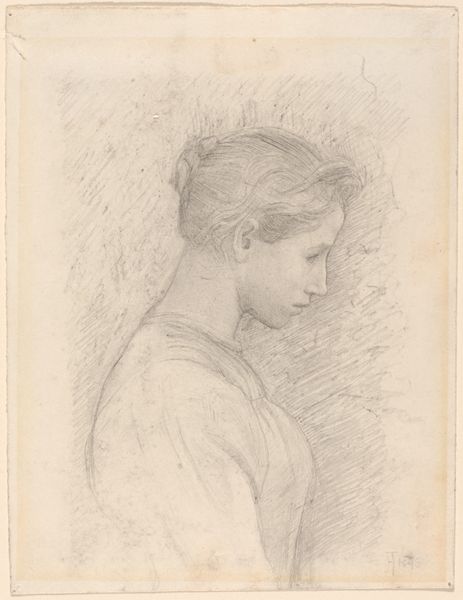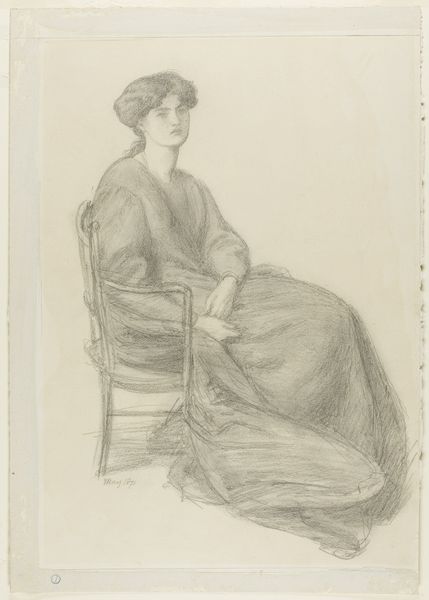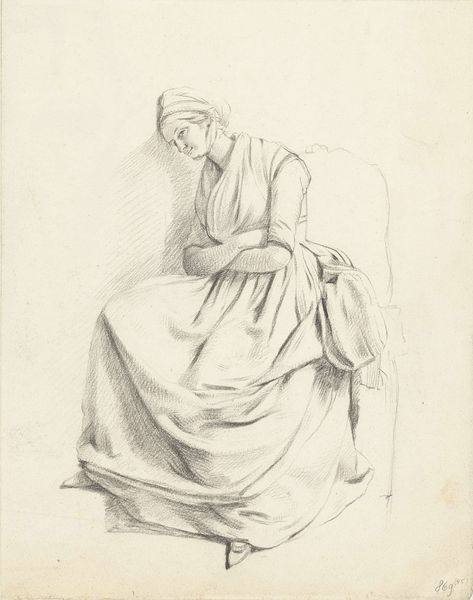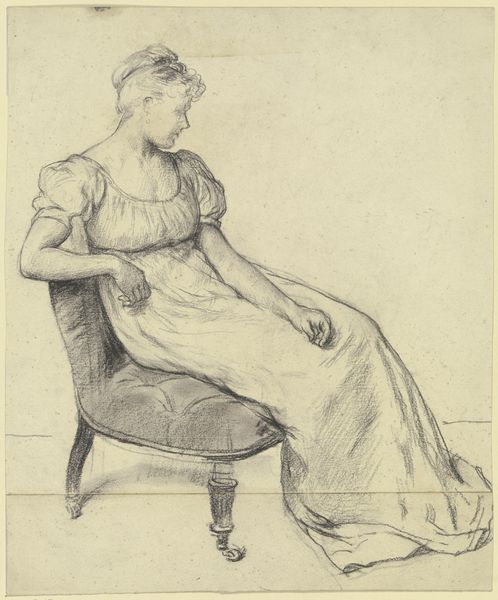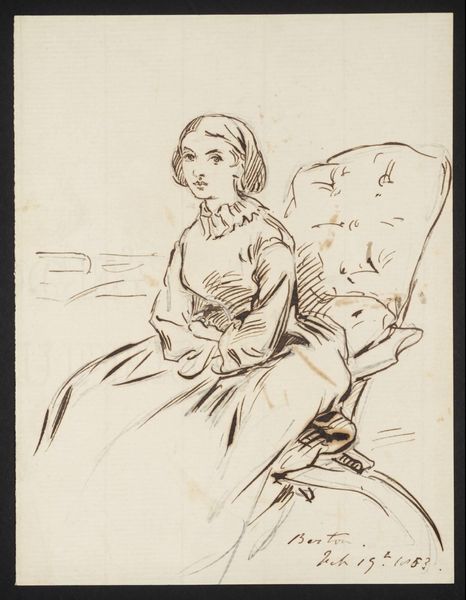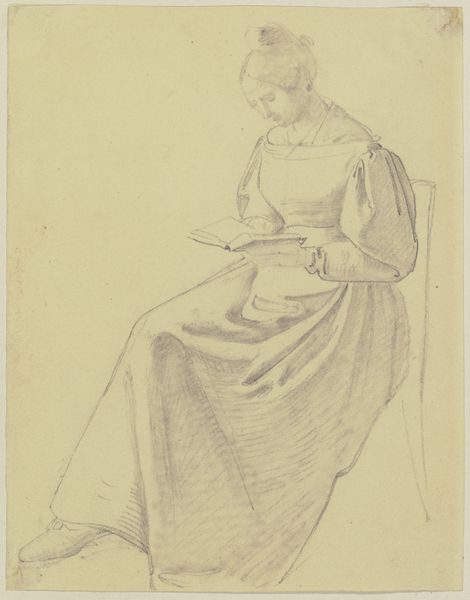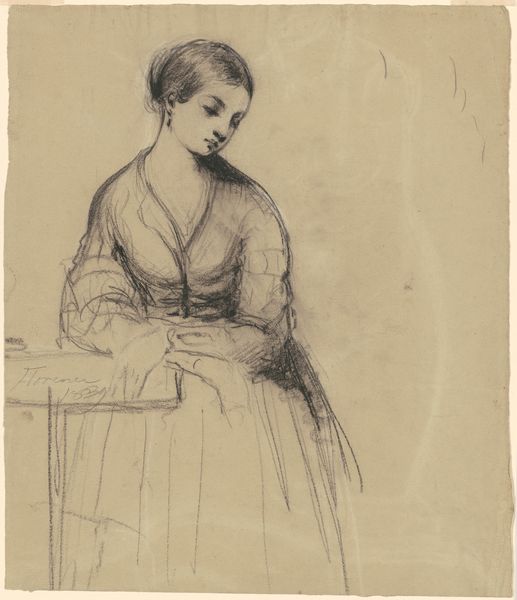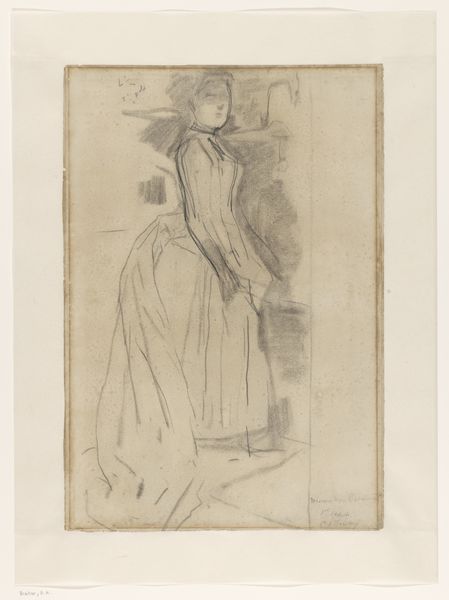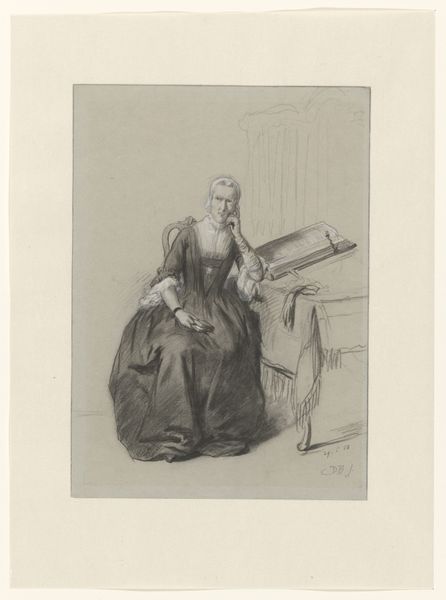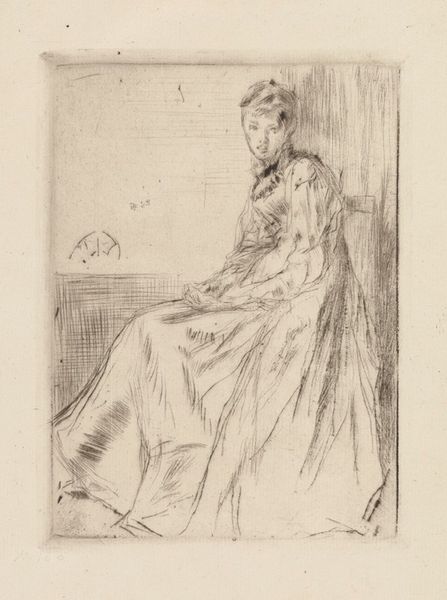
drawing, print, etching, paper
#
portrait
#
drawing
# print
#
impressionism
#
etching
#
paper
#
intimism
Dimensions: 232 × 158 mm (image/plate); 303 × 240 mm (sheet)
Copyright: Public Domain
Curator: What strikes you first about this etching, The Mandolin Player by Mary Cassatt, dating to around 1889? Editor: The simplicity. There's a stillness evoked by the delicate lines and the restricted tonal range. It feels very intimate and contemplative. Curator: That intimacy aligns with Cassatt's frequent portrayal of domestic scenes. What’s crucial to note is the etching process itself. Observe how Cassatt used this method to mass-produce art, making images and commentary on modern life available to the middle classes. Editor: I see your point. But let’s not disregard the careful composition here. The figure fills the frame, but there's breathing room, particularly around her head. It allows the eye to travel and to consider the form created by the repeated parallel lines in the skirt. Curator: Precisely. Her focus on clothing hints at social structures. Consider the textiles, where those garments originate, and who bears the economic responsibility to supply those material components for the clothes depicted in the drawing. This piece embodies how societal values penetrate private spheres. Editor: It also exemplifies the influence of Japanese prints on Impressionist artists. Notice the flattened perspective, the elegant simplicity, and the subject. The very suggestion of space in that area behind her with just a few subtle markings. The scene exists for what she provides there visually and the mood she conjures. Curator: And the mandolin suggests more than just a musical instrument. Cassatt subtly comments on women's limited roles, reduced sometimes to providing background noise in upper class families, like this character, rendered available by class and the Industrial Revolution that formed the materials needed to fashion this scene. Editor: It’s hard to see such a limiting scope through Cassatt’s own legacy. This image, to me, reveals more of her vision than the subject's own circumstance. There is, again, her eye. Curator: Ultimately, this etching speaks volumes about the socio-economic landscape of Cassatt's era, even when you consider that the piece does function as more of an aesthetic presentation rather than outright critique of the era it occupies. Editor: I see it too. And regardless of the circumstances Cassatt sought to uncover, her technical ability still holds true in this evocative, and incredibly composed piece.
Comments
No comments
Be the first to comment and join the conversation on the ultimate creative platform.

